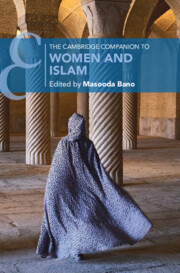Book contents
- The Cambridge Companion to Women and Islam
- Cambridge Companions to Religion
- The Cambridge Companion to Women and Islam
- Copyright page
- Contents
- Contributors
- Preface
- A Note on Foreign-Language Words
- Introduction
- Part I Logic of Classical Reasoning
- Part II Asserting Agency in Faith
- Part III Asserting Agency in Socio-Political Life
- Volume Bibliography
- Index
- Cambridge Companions To … (continued from page ii)
- References
Volume Bibliography
Published online by Cambridge University Press: 12 April 2025
- The Cambridge Companion to Women and Islam
- Cambridge Companions to Religion
- The Cambridge Companion to Women and Islam
- Copyright page
- Contents
- Contributors
- Preface
- A Note on Foreign-Language Words
- Introduction
- Part I Logic of Classical Reasoning
- Part II Asserting Agency in Faith
- Part III Asserting Agency in Socio-Political Life
- Volume Bibliography
- Index
- Cambridge Companions To … (continued from page ii)
- References
- Type
- Chapter
- Information
- The Cambridge Companion to Women and Islam , pp. 380 - 391Publisher: Cambridge University PressPrint publication year: 2025

